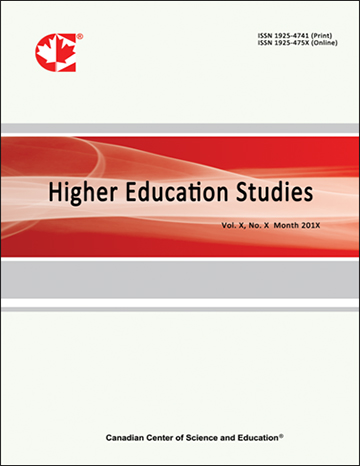The Principle of Temporal Sequence in the Teaching of Chinese as a Second Language
- Gang Song
- Li Fan
Abstract
This study investigates the capacity of elementary-level Chinese second language learners to memorize serial verb sentences based on the results of a questionnaire. Our findings show that adult second language learners employ the concept of temporal sequence in language learning, consciously or unconsciously, whether or not the chronological principle has been formally taught. Therefore, we propose that specific cognitive principles, such as the chronological principle, should be carefully applied or formally taught in language training to maximize teaching and learning effectiveness.
- Full Text:
 PDF
PDF
- DOI:10.5539/hes.v12n4p120
Index
- AcademicKeys
- CNKI Scholar
- Education Resources Information Center (ERIC)
- Elektronische Zeitschriftenbibliothek (EZB)
- EuroPub Database
- Excellence in Research for Australia (ERA)
- Google Scholar
- InfoBase
- JournalSeek
- Mendeley
- Open Access Journals Search Engine(OAJSE)
- Open policy finder
- Scilit
- Ulrich's
- WorldCat
Contact
- Sherry LinEditorial Assistant
- hes@ccsenet.org
